Islamic revolution in Iran. "Red Sector"
Shah mode Pahlavi
Until the Islamic Revolution 1979, Iran was considered one of the key US allies in the Middle East. The country was ruled by a Shah from the Pahlavi dynasty. This dynasty was young, and by the time of the events described in Iran, only its second representative, Mohammed Reza Pahlavi, ruled. His father Reza Pahlavi (1878-1944) was descended from the province of Mazandaran on the coast of the Caspian Sea and before he ascended the throne was called Reza Savadkuhi.
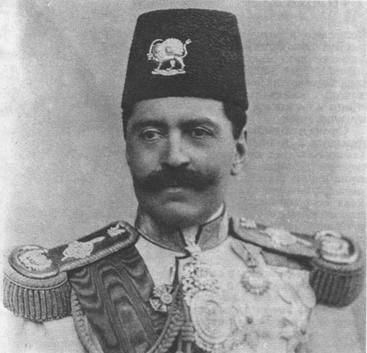 By nationality, he was half Mazandaran (after his father), half - Azeri (after his mother). In his youth, Reza entered military service and for several decades was able to make a dizzying career, having graduated from an ordinary Persian Cossack brigade to the commander-in-chief of the Iranian army. In 1923, Reza Pahlavi was appointed Prime Minister, and in 1925, he overthrew Ahmad Shah Qajar, the monarch of the Qajar Turkic ruling in the country since 1795. Thus, the power of the Pahlavi dynasty, which took the course of the political, economic and cultural modernization of Iranian society, was established in Iran. Both Reza and his son Mohammed Reza were “Westerners” by their convictions and saw the need for “Westernization” of Iran, developing close cooperation with Great Britain, and then with the United States of America. During the rule of the Pahlavi dynasty, attempts were made to form a new state ideology, which could become an impetus to turn the country into a developed military, cultural, and economic power. The basis of state ideology was taken Persian nationalism of a secular nature, and based on the pre-Islamic traditions of Iranian statehood. Mohammed Reza Pahlavi even for some time abolished the traditional Islamic countries from Hijra and decided to count the years from the accession of the Achaemenid dynasty, which created the ancient Persian state.
By nationality, he was half Mazandaran (after his father), half - Azeri (after his mother). In his youth, Reza entered military service and for several decades was able to make a dizzying career, having graduated from an ordinary Persian Cossack brigade to the commander-in-chief of the Iranian army. In 1923, Reza Pahlavi was appointed Prime Minister, and in 1925, he overthrew Ahmad Shah Qajar, the monarch of the Qajar Turkic ruling in the country since 1795. Thus, the power of the Pahlavi dynasty, which took the course of the political, economic and cultural modernization of Iranian society, was established in Iran. Both Reza and his son Mohammed Reza were “Westerners” by their convictions and saw the need for “Westernization” of Iran, developing close cooperation with Great Britain, and then with the United States of America. During the rule of the Pahlavi dynasty, attempts were made to form a new state ideology, which could become an impetus to turn the country into a developed military, cultural, and economic power. The basis of state ideology was taken Persian nationalism of a secular nature, and based on the pre-Islamic traditions of Iranian statehood. Mohammed Reza Pahlavi even for some time abolished the traditional Islamic countries from Hijra and decided to count the years from the accession of the Achaemenid dynasty, which created the ancient Persian state. In foreign policy, the shah of Iran held openly pro-American positions. In Asia and Africa, the Shah supported reactionary regimes that collaborated with the United States. So, Iran actively participated in the war that the Sultan of Oman led against the communist rebels operating in the mountain province of Dhofar. During the civil war in Yemen, the Shah rendered all-round assistance to monarchists who were trying to preserve the Zaydit Imamate, overthrown in 1962 by revolutionary-minded supporters of the republic. It is significant that at the same time the Shah maintained good relations with Israel, which also could not but cause outrage among Muslims of the Middle Eastern states. The domestic policy of Shah's Iran was distinguished by authoritarianism and the desire to suppress any oppositional tendencies. The main enemies of the regime were proclaimed communists and Islamists, against whom harsh repression was undertaken.
Getting out of the Shah and national minorities. Iran is a multinational country and the Persians do not even constitute the majority of the population. However, taking the course on Persian nationalism, the Shah’s government oppressed the peoples living in the west, south and east of Iran - Kurds, Azeris, Turkmen, Baluchis. The latter often revolted against the central government. Thus, the Baluch's national liberation struggle in southeastern Iran forced the shah's government to maintain good relations with Afghanistan and Pakistan at all times, since these countries also had a large Baluchi population.
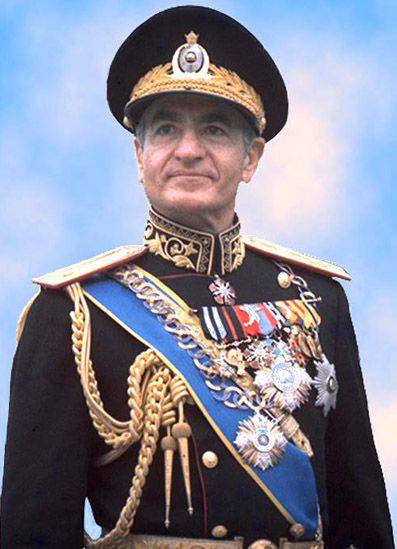 Naturally, the policy of the Shah's regime did not suit a significant part of the Iranian population. Muslim believers, who constituted the majority of the country's population and prevailed among the rural and urban basic strata, were unhappy with the policy of westernization, attempting to age-old foundations of Iranian society and violating the established order of relationships between a man and a woman, rules of behavior, lifestyle in general. National minorities were not satisfied with the policy of Persian nationalism. Supporters of socialist and communist ideology considered the existing power a reactionary feudal regime, exploiting the people in the interests of the American imperialists. The pro-American policy of the Shah did not suit both Muslims and leftists. The situation was aggravated by the economic difficulties that Iran experienced in the 1970s.
Naturally, the policy of the Shah's regime did not suit a significant part of the Iranian population. Muslim believers, who constituted the majority of the country's population and prevailed among the rural and urban basic strata, were unhappy with the policy of westernization, attempting to age-old foundations of Iranian society and violating the established order of relationships between a man and a woman, rules of behavior, lifestyle in general. National minorities were not satisfied with the policy of Persian nationalism. Supporters of socialist and communist ideology considered the existing power a reactionary feudal regime, exploiting the people in the interests of the American imperialists. The pro-American policy of the Shah did not suit both Muslims and leftists. The situation was aggravated by the economic difficulties that Iran experienced in the 1970s. Counterintelligence SAVAK and Internal Terror
In the fight against internal opposition, the Shah relied on a policy of hard terror against his opponents. A powerful and extensive network of SAVAK security services was created (Sazman-e Ettela'at va Amniyat-e Keshvar - Information and Security Service of the Country). Special assistance to the Shah in the creation of special services was provided by specialists from the Central Intelligence Agency of the USA. In March, 1955, a Colonel of the American Army, who had been in September 1953 under General Teimour Bakhtiar as a military adviser, was replaced by an entire mission of five CIA employees. In addition, Colonel Yakov Nimrodi, one of the leading experts of the Israeli intelligence service Mossad, was sent to Iran. The American and Israeli specialists who trained the employees of the Shah's intelligence and counterintelligence, also asked the general direction of the activities of the Iranian special services 1950-1970-s. SAVAK leadership was in constant communication with the American, British and Israeli intelligence services, carrying out their instructions in the fight against the communist and national liberation movements in the Middle East, as well as in the field of intelligence activities against the Soviet Union and other countries of the socialist bloc. The most important task of SAVAK was to spy on the Iranian population. With the help of freelance agents working for free or with counterintelligence, SAVAK monitored virtually all politically unreliable Iranians. Special control was established over the categories of the population that are potentially prone to radical sentiments, above all - students. The "stukachs" of the Shah's counterintelligence were active in all the universities of the country, in student dormitories and in the crowded places of the younger generation of Iranians.
One of the key tasks of SAVAK was the struggle against pro-Soviet and in general with any left-wing and radical left-wing political parties and groups operating in Iran. The United States feared the spread of socialist ideology in the Middle East and the creation of pro-Soviet regimes not only in Arab countries, but also in Iran, therefore SAVAK was considered by the American special services as the main strategic partner in the region. Employees of SAVAK not only used cruel torture of the communist activists in jails of the Shah regime, but also engaged in extrajudicial destruction of ideological opponents of the regime. Oppositionists who were killed by SAVAK agents were accused of allegedly providing armed resistance during the verification of documents. It is significant that in the end SAVAK agents killed the first head of the special services, General Teymur Bakhtiyar, who, after a quarrel with the Shah, emigrated to Iraq and created an opposition center there. Over the years, the existence of ominous intelligence services SAVAK in Iran has been tortured about 380 thousands of people. In the prisons of the shah's regime, the counterintelligence used the most cruel torture, of course, denied at the official level. Torture by electric current, injuries of the genital organs, pulling out of the teeth - all these mockeries and tortures of the opposition members were regularly practiced in the dungeons of the Shah regime.
Ali Shariati and the concept of "red shiism"
Dissatisfaction with the arbitrariness of the Shah's regime contributed to the spread of oppositional moods in Iranian society. The greatest danger to the Shah's regime was not even a communist ideology, which, due to atheism, was not prepared by the majority of the Iranian population, but by various trends of Islamic socialism, combining traditional Islamic values with radical socialist phraseology. The Shah authorities were well aware of the danger posed by such ideological and practical synthesis. Therefore, the most brutal torture was used against the activists of the left Islamist groups, and such organizations themselves were considered to represent a particular danger to the existing political system.
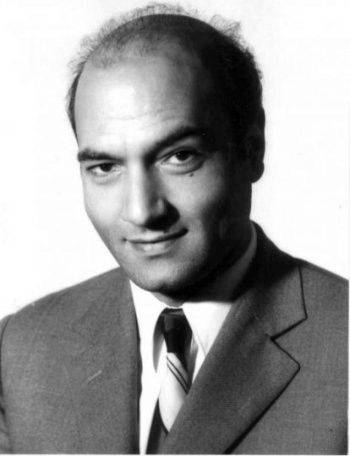
The most famous figure in the world of Iranian Islamic socialism can be called Ali Sharia (1933-1977). A philosopher and sociologist, Ali Shari'i, still in his student years, became interested not only in traditional Islamic theology, but also in modern Islamic and European philosophy. Shariati studied at the pedagogical school in Mashhad, and then at the literary department of the Mashhad University. After receiving a bachelor's degree, the young man went to France, where he attended lectures at the famous Sorbonne. Sharia was lucky to be personally acquainted with Jean Paul Sartre and the legendary African revolutionary and philosopher Franz Fanon. While studying in France, Shariati also became acquainted with the Algerian revolutionaries from the National Liberation Front and gradually became imbued with ideas about the need to combine Islam and socialist ideology. In Islam, Shariati saw revolutionary ideology relevant to the modern world, which set as its goal the social liberation of humanity. A brilliant education allowed Ali Shariati to build his own socio-philosophical concept, which treats Islam from revolutionary, left-wing radical positions.
Sharia, according to Shariati, was the quintessence of revolutionary Islam, because throughout the history of the Islamic world, underprivileged masses of the people — the lower parts of the city and the countryside — performed under the banner of the Shiites. Indeed, it was Shiism in Iran, in Turkey, and in the Arab countries that became the ideology of popular uprisings. The revolutionary potential of Shiism was especially vividly manifested in those Muslim states where Sunni Islam dominated. There, Shiism became the banner of anti-government movements, aided by the short-sighted policy of the elites who oppressed their subjects, the heretics. The doctrine of the approach of the Mahdi through the independent struggle for social justice also led to the revolutionary nature of Shiism and contributed to the fact that it was the socialist concepts borrowed in the West that became Shiism as the most fertile ground. Alawis close to Shiism make up a significant part of the left in Turkey, in Syria the Alawites are the backbone of the Left Socialist Ba'ath Party.
“Red Shiism”, as Shariati wrote, “for seven hundred years was the flame of the spirit of revolution, the quest for freedom and justice, always turned towards ordinary people and rigorously fighting against oppression, ignorance and impoverishment” (Shariati A. Red Shiism: a religion of martyrdom. Black Shiism: the religion of mourning). The Shari'i revolutionism of Shari'ah opposed the "conformism" of Sunniism, although with reference to the current situation he insisted on the need to unite Shiites and Sunnis in the fight against American imperialism and social injustice in Iran and other Muslim states. In modern conditions, the Shiite population, as Shariati believed, was supposed to rise against the oppressors and overthrow the Shah's regime, establishing a just political system based on Islamic and socialist principles. Islamic dogma Shariati attached modern, revolutionary forms. Thus, he wrote about the exploited and the exploiters, calling them by the Koranic terms "dispossessed" and "haughty." As for the liberation revolution, then, according to Shariati, it was supposed to be headed by “knowledgeable” people — those who were chosen by Allah himself to be the leader of the masses and feel responsible for the future of the country and the people. As applied to the current situation, Shariati advocated the concept of “modernization without westernization,” that is, it called for the scientific, technical, economic, and cultural development of the Islamic world without borrowing Western spiritual and moral values that run counter to the traditions of Islam and Islamic peoples. The views of Shariati were widely spread among the part of the radical-minded youth who sympathized with the left ideas, but was not ready to break with the Islamic identity, joining the atheist-minded communists. On the other hand, the revolutionary ideology of Shariati influenced the Shiite clergy. Even the leader of the Islamic revolution, Ayatollah Ruhallah Mousavi Khomeini, who was 30 years older than Shariati, borrowed a number of ideas from “red Shiite”.
They understood perfectly well the danger of Ali Shariati for the Shah regime and the Iranian security forces. He was arrested and 18 spent months in solitary confinement. Under the pressure of public opinion, the Shah still allowed the Shariati to leave the country. The philosopher settled in Southampton, in the UK. 19 June 1977, the forty-four-year-old Shariati, was found dead in his apartment. The official version was a heart attack, but almost no one doubted that the death of a young and healthy man was the result of another “special operation” of the Shah’s counterintelligence.
Mujahideen and Fidains
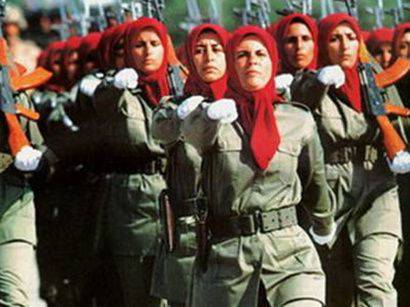 Since 1960's In Iran, a number of revolutionary organizations acted from left-wing radical positions, but disagreed with Marxist communists on attitudes towards religion. In fact, these organizations tried to combine the socialist path of social development with Islamic spiritual and moral values. In 1965, the Organization of the Mojahedin of the Iranian people (Mojahedin e-Hulk) was established, the backbone of which was made up of students from Tehran University who were dissatisfied with the Shah's regime and were in favor of creating a socialist “rubber” republic in Iran. In 1970-s. "Mojahedin e-Hulk" turned to terrorist methods of fighting against the Shah's regime. In 1978, a year before the Islamic Revolution, the organization had almost 100 thousands of activists. From 1972, it was headed by Masood Rajavi (R.1948), who joined the organization when he was a student at Tehran University. In 1971, the city of Rajavi was arrested by the Shah's counterintelligence and was in prison awaiting the death penalty. Only the intervention of the world community, including Francois Mitterrand, saved the life of the young man. Shah replaced the penalty with a life sentence, and in 1979, after the revolution, Rajawi was released.
Since 1960's In Iran, a number of revolutionary organizations acted from left-wing radical positions, but disagreed with Marxist communists on attitudes towards religion. In fact, these organizations tried to combine the socialist path of social development with Islamic spiritual and moral values. In 1965, the Organization of the Mojahedin of the Iranian people (Mojahedin e-Hulk) was established, the backbone of which was made up of students from Tehran University who were dissatisfied with the Shah's regime and were in favor of creating a socialist “rubber” republic in Iran. In 1970-s. "Mojahedin e-Hulk" turned to terrorist methods of fighting against the Shah's regime. In 1978, a year before the Islamic Revolution, the organization had almost 100 thousands of activists. From 1972, it was headed by Masood Rajavi (R.1948), who joined the organization when he was a student at Tehran University. In 1971, the city of Rajavi was arrested by the Shah's counterintelligence and was in prison awaiting the death penalty. Only the intervention of the world community, including Francois Mitterrand, saved the life of the young man. Shah replaced the penalty with a life sentence, and in 1979, after the revolution, Rajawi was released. However, he was not engaged in legal political activities for a short time after his release - Ayatollah Khomeini was no less negative about the Islamists than the Shah's regime. Already in 1981, the city of Rajavi spoke out against the Khomeinists and led the guerrilla war of his organization. The peak of activity of the “mojaheds” came in August of 1981, when the organization’s militants attacked the administrative, military and police infrastructure of Iran. Only from 7 to 10 of August was 60 exploded in government and military facilities. Nevertheless, the Iranian secret services soon managed to push the Mujahedin e-Hulk into the territory of neighboring Iraq. Rajavi, the leader of the organization, also found political asylum in Iraq. Subsequently, the Mojahedin e-Hulk became a fully-armed Iraq-controlled organization that regularly attacked Iranian territory and Iranian embassies in other states. The Iraqi government of Saddam Hussein, who was in a state of confrontation with Iran, provided Mojahedin e-Hulk with financial, military and technical assistance. The militants of the organization were based in Iraq, received weapons from the Iraqi army and were used for provocations against Iran. After the overthrow of Saddam Hussein, the organization suffered significant damage. A large number of its activists were arrested and imprisoned in Iraq on charges of collaborating with the Saddam regime.
In addition to the Mojahedin e-Hulk, there were still a number of revolutionary organizations in Iran trying to wage an armed struggle against the Shah's regime. So, back in 1963, under the leadership of Hassan Zarifi, the Organization of Partisans - Fidains of the Iranian People (OPFIN) was created, on the basis of which the OPFIN (the majority) and the OPFIN (minority), as well as the “Iranian Popular Partisans - Fidains” appeared later. Unlike the "mujahideen", the "fidains" adhered to the Marxist-Leninist ideology and to a lesser degree sympathized with the Islamic religion. The organization “Peykari”, which left the Mojahedin e-Hulk and also took more anticlerical positions, moved to the Marxist-Leninist positions. As for the People’s Party of Iran (Tuda), a local communist party controlled by the Soviet Union and in pro-Soviet positions, it practically did not manifest itself in the armed opposition to the Shah's regime. After the Islamic revolution, the Tudeh party was virtually destroyed in Iran and continued to exist only in exile.
Ayatollah Talegani
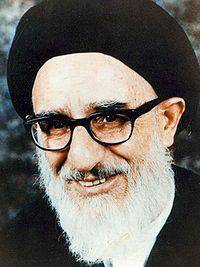 Among the broad masses of the Iranian population, representatives of the Shiite clergy traditionally enjoyed special prestige. Unlike many other reactionary regimes of the West and the East, mutual understanding between the secular and spiritual elite of society was not established in Shah Iran. The reason for this was the course towards the westernization of Iranian society, taken by the Shah and irritating the conservative-minded Shiite clergy. For many Shiite spiritual authorities - the “Ayatollahs” - were characterized by sympathy for socialist views, since they regarded social justice as one of the key characteristics of the Islamic state. One of the most reputable ayatollahs who held leftist sentiments was Mahmoud Eliya Talegani (1911-1979). Back in 1938, Ayatollah Taleghani was sentenced to a one-year prison term for criticizing the then Shah Reza Pahlavi. Among the representatives of the Iranian Shiite clergy, Ayatollah Talegani held one of the most leftist positions. He was known as an implacable opponent of American imperialism, Israeli Zionism and the Shah’s reactionary regime.
Among the broad masses of the Iranian population, representatives of the Shiite clergy traditionally enjoyed special prestige. Unlike many other reactionary regimes of the West and the East, mutual understanding between the secular and spiritual elite of society was not established in Shah Iran. The reason for this was the course towards the westernization of Iranian society, taken by the Shah and irritating the conservative-minded Shiite clergy. For many Shiite spiritual authorities - the “Ayatollahs” - were characterized by sympathy for socialist views, since they regarded social justice as one of the key characteristics of the Islamic state. One of the most reputable ayatollahs who held leftist sentiments was Mahmoud Eliya Talegani (1911-1979). Back in 1938, Ayatollah Taleghani was sentenced to a one-year prison term for criticizing the then Shah Reza Pahlavi. Among the representatives of the Iranian Shiite clergy, Ayatollah Talegani held one of the most leftist positions. He was known as an implacable opponent of American imperialism, Israeli Zionism and the Shah’s reactionary regime. In accordance with Shiite belief, Talegani advocated the approach of the “hidden” Imam Mahdi to the earth. Instead of passively expecting Mahdi, Talegani called on the masses to revolt against the Shah's regime and, thus, put an end to the current injustice and abuse of the Islamic faith. The social ideal of Talegani was a state of social justice, in which there would be no exploitation and discrimination on racial and national grounds. At the same time, speaking from a socialist position, Talegani was extremely negative about atheism and saw the need to fight atheistic communist and socialist parties, which he considered opponents of Islamic dogma and, accordingly, the triumph of an ideal society. Morality, free mind and justice Talegani considered the key principles of an ideal Islamic society.
However, on the nature of the post-revolutionary sociopolitical structure, Talegani’s views differed from the position of the ideological leader of Shiites, Ayatollah Ruhollah Khomeini. Khomeini adhered to the principle of “wilayat-e fakih”, according to which the state should be governed by specially trained and authoritative theologians. Talegani was more democratic and insisted on the need for democracy and collective ownership as the main conditions for achieving justice in the post-revolutionary Iranian society. Naturally, such an ideology was negatively perceived by the more right-wing part of the Shiite clergy, among whom were representatives of feudal families who did not want to identify the establishment of Islamic theocracy with socialist transformations in the socio-economic life of the country.
Khomeini against the "left bias"
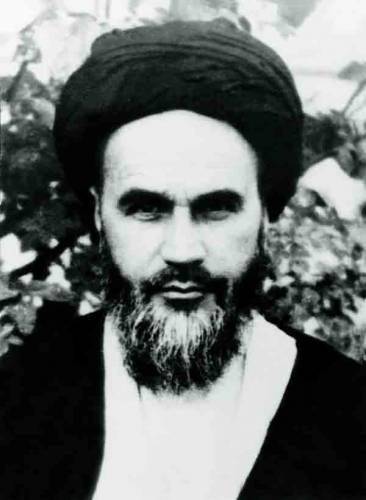 Ruhollah Mousavi Khomeini (1902-1989) led the more right and conservative wing of the Shiite clergy. A descendant of the seventh Imam Musa al-Kazim, Khomeini was one of the “seyyids” - the most revered layer of Iranian society. Having received a traditional religious education, Ruhollah Khomeini, still in his youth, embarked on the path of fighting the Shah's regime. For the anti-Shah position he was forbidden to engage in teaching in religious educational institutions, but Khomeini ignored the ban and continued to teach illegally, collecting an increasing number of students and followers. By 1960. He became one of the most authoritative representatives of the Shiite clergy. Khomeini repeatedly spoke out against the policy of the Shah’s regime and called the Shah only an Israeli agent and “confidant of Israel.”
Ruhollah Mousavi Khomeini (1902-1989) led the more right and conservative wing of the Shiite clergy. A descendant of the seventh Imam Musa al-Kazim, Khomeini was one of the “seyyids” - the most revered layer of Iranian society. Having received a traditional religious education, Ruhollah Khomeini, still in his youth, embarked on the path of fighting the Shah's regime. For the anti-Shah position he was forbidden to engage in teaching in religious educational institutions, but Khomeini ignored the ban and continued to teach illegally, collecting an increasing number of students and followers. By 1960. He became one of the most authoritative representatives of the Shiite clergy. Khomeini repeatedly spoke out against the policy of the Shah’s regime and called the Shah only an Israeli agent and “confidant of Israel.” After 5 on June 1963, the Shah police arrested Ayatollah and placed him under house arrest, a wave of mass anti-government protests took place throughout Iran. The intensity of the passions was such that the police and troops had to open fire on the demonstrators. In clashes with the police, at least 400 people died. Frightened Shah decided to release Khomeini, followed by expulsion from Iran. Ayatollah went to Turkey, where he moved to Iraq, and then to France. In emigration, the Shiite leader continued active anti-American and anti-Shah activities. The most negative attitude was towards Israel, the United States and the USSR, which he considered the primary enemies of the Islamic world.
While Khomeini was in exile, in fact Ayatollah Mohammad Kazem Shariatmadari (1905-1986) became the main spiritual authority of Iranian Shiites. An ethnic Azerbaijani by birth, Shariatmadari was also an implacable opponent of the Shah regime, but he spoke from less conservative positions. He argued the compatibility of scientific and technological progress with Islamic dogma and opposed the principle of theocracy, the government of the country of theologians, which Khomeini and his associates defended. The positions of Shariatmadari differed from the Khomeinistic and on the issue of foreign policy orientation. Shariatmadari held to the point of view of the need to develop good-neighborly relations with the Soviet Union, while Khomeini referred to the atheistic Soviet state with an extreme degree of negativism.
Until the right-wing conservative wing of the Shiite clergy acquired the strongest positions in the anti-Shah revolutionary movement, Ayatollah Khomeini was forced to “close his eyes” to the activities of left-wing Islamic organizations, in which he saw his tactical allies in the fight against the Shah regime and its American masters. However, the success of the Islamic Revolution in February 1979 and the subsequent proclamation of Iran by the Islamic Republic of 1 on April 1979 brought about gradual changes in the domestic policy of the country. Khomeini and his supporters decided to remove from the real participation in political decision-making a whole group of ayatollahs, whose views differed from those of the Khomeinists. First of all, it was about the Shiite leaders and activists who were on the left. Khomeini suspected left Shiites in pro-Soviet sentiment and believed that they could be potential "Soviet spies." Therefore, after the victory of the Islamic revolution, the new theocratic leadership of the country turned to the organization of the gradual squeezing of representatives of the left wing from the political scene of post-revolutionary Iran. Of course, the authoritative ayatollahs of the Khomeinist authorities did not dare to openly repress, but representatives of the lower level of the left-wing Islamist organizations were persecuted, placed in prisons and even destroyed.
Khomeini’s refusal to grant national autonomy to the numerous ethnic groups that inhabited Iran soon turned a certain part of the Kurds, Baluchis and Azerbaijanis against the Ayatollahs. The mediator between the Khomeinists and the Kurds was the respected Ayatollah Talegani. However, Khomeini, dissatisfied with Taleghani’s position on the political structure of post-revolutionary Iran, ordered the arrest of his sons. 9 September 1979 Ayatollah Taleghani died. Mass riots in South Azerbaijan were largely driven by Ayatollah Shariatmadari, who was considered the spiritual leader of the Azerbaijani population of Iran. In 1982, Ayatollah Shariatmadari was placed under house arrest, and died in 1986. In 1989, Ayatollah Hossein-Ali Montazeri (1922-2009), who for a long time was considered the official successor and closest associate of Khomeini, fell into disgrace. The reason for the loss of confidence in Montazeri was the latter’s liberal positions on the issue of the legalization of political parties and the establishment of a dialogue with Western countries.
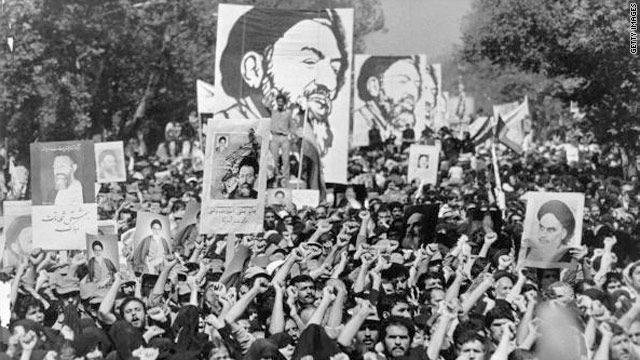
As a result of the Islamic revolution in Iran, the left-wing and left-wing movement was virtually destroyed. Political parties were banned, and some of their activists were executed, some were thrown into prison. The same communists and socialists who managed to escape, left the territory of Iran and settled in emigration - both in the neighboring countries of the Middle East and in the United States and Western Europe. For a long time, the left-radical organizations of Iran waged an active terrorist struggle against the theocratic government of the Islamic Republic, organizing terrorist acts and attacks on the country's leading political, religious and military leaders. However, in the end, the ruling regime managed to overcome the resistance of its opponents, although at present it is difficult to call the political situation in some regions of Iran stable.
Of course, a victory of the left Islamic forces in Iran, focused on the ideas of Ali Shariati or Ayatollah Talegani, would have seemed more desirable for the Soviet Union, since Khomeini and his supporters treated the Soviet regime no less negatively than the United States and Israel. Right-wing supporters of Imam Khomeini have committed many crimes against their own people, hiding behind anti-American and anti-Zionist slogans. It is worth recalling that in the 1980-s. The victims of the Iranian authorities were not so much supporters of American imperialism (there were practically no such people among ordinary Iranians), but communists, socialists, representatives of left-wing Islamic organizations, as well as representatives of national and religious minorities of the country.
However, despite the fact that the political system established after the victory of the Islamic revolution in Iran entailed mass repressions against dissenting population, created many difficulties for the non-confessional minorities living in the country, it is difficult to deny the contribution of Khomeinists to a radical change in the living conditions in the country and features, in changing the position of Iran in international politics. Corruption and cronyism flourished from typical eastern despotism, in which all power was in the hands of the Shah family, and foreign and domestic policy was completely subordinated to the interests of the United States and Great Britain, Iran turned into a truly independent state, albeit with its own specifics.
Information